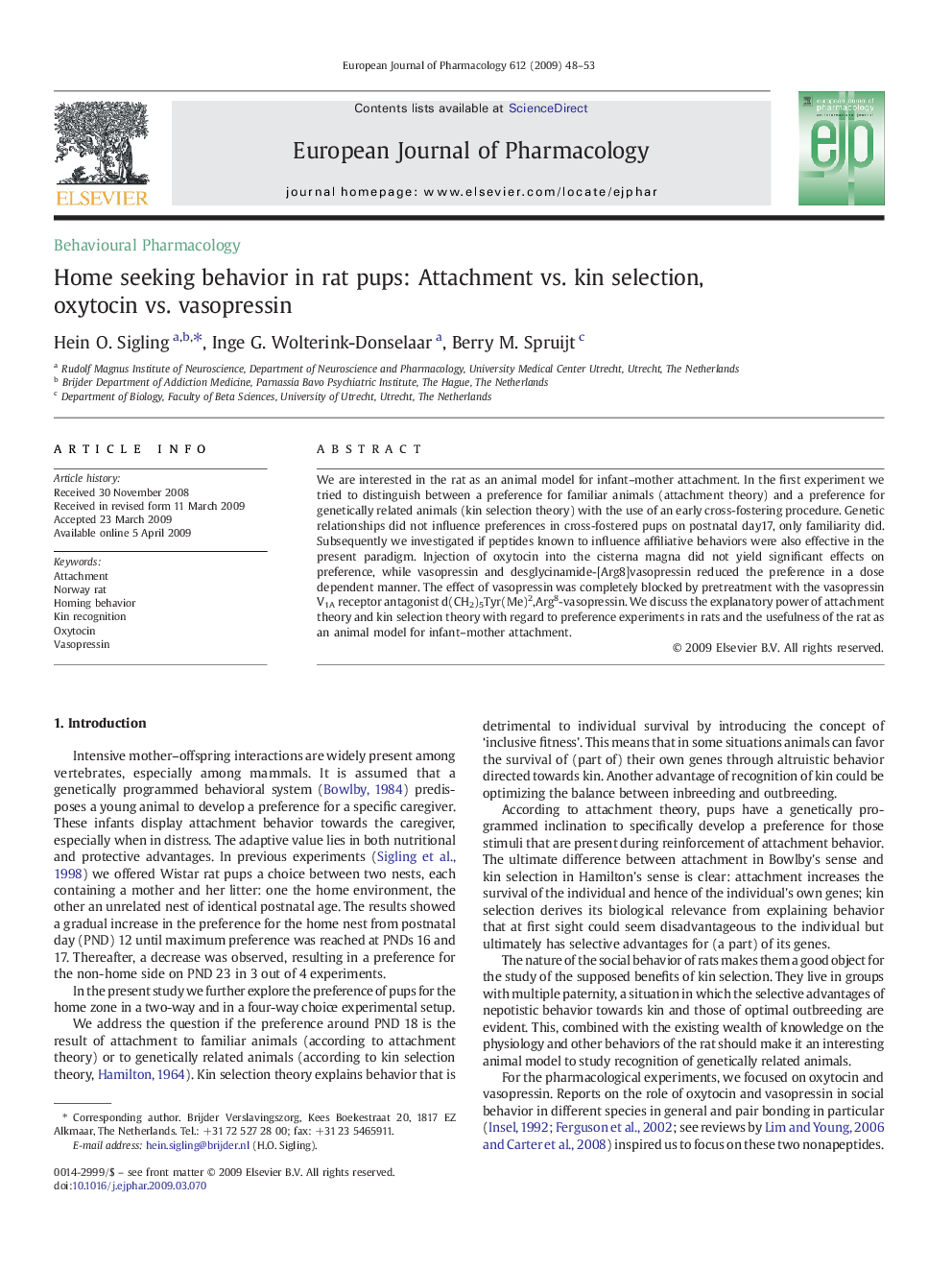| کد مقاله | کد نشریه | سال انتشار | مقاله انگلیسی | نسخه تمام متن |
|---|---|---|---|---|
| 2534249 | 1559083 | 2009 | 6 صفحه PDF | دانلود رایگان |

We are interested in the rat as an animal model for infant–mother attachment. In the first experiment we tried to distinguish between a preference for familiar animals (attachment theory) and a preference for genetically related animals (kin selection theory) with the use of an early cross-fostering procedure. Genetic relationships did not influence preferences in cross-fostered pups on postnatal day17, only familiarity did. Subsequently we investigated if peptides known to influence affiliative behaviors were also effective in the present paradigm. Injection of oxytocin into the cisterna magna did not yield significant effects on preference, while vasopressin and desglycinamide-[Arg8]vasopressin reduced the preference in a dose dependent manner. The effect of vasopressin was completely blocked by pretreatment with the vasopressin V1A receptor antagonist d(CH2)5Tyr(Me)2,Arg8-vasopressin. We discuss the explanatory power of attachment theory and kin selection theory with regard to preference experiments in rats and the usefulness of the rat as an animal model for infant–mother attachment.
Journal: European Journal of Pharmacology - Volume 612, Issues 1–3, 10 June 2009, Pages 48–53